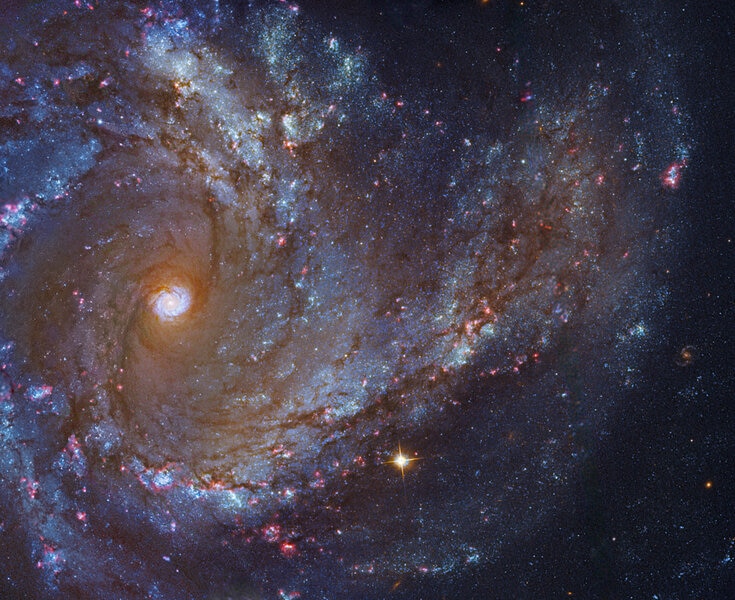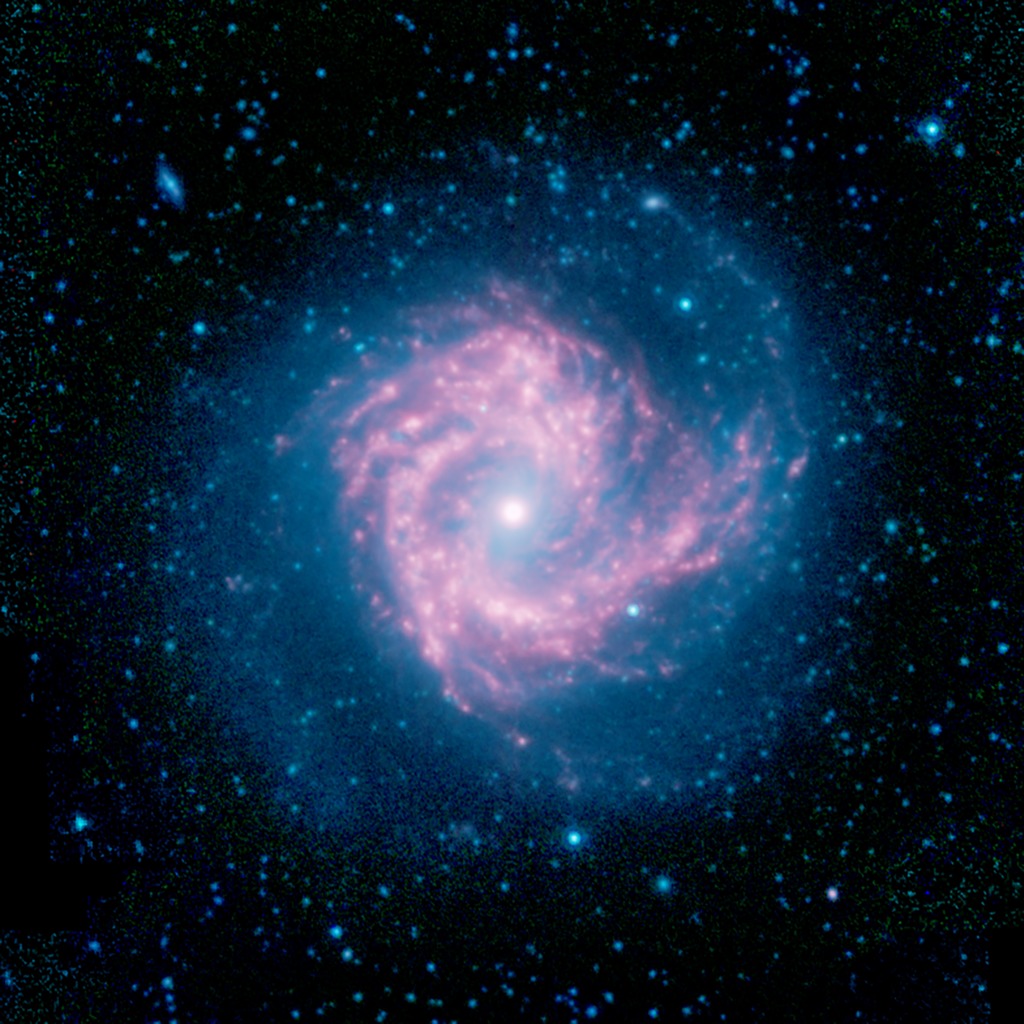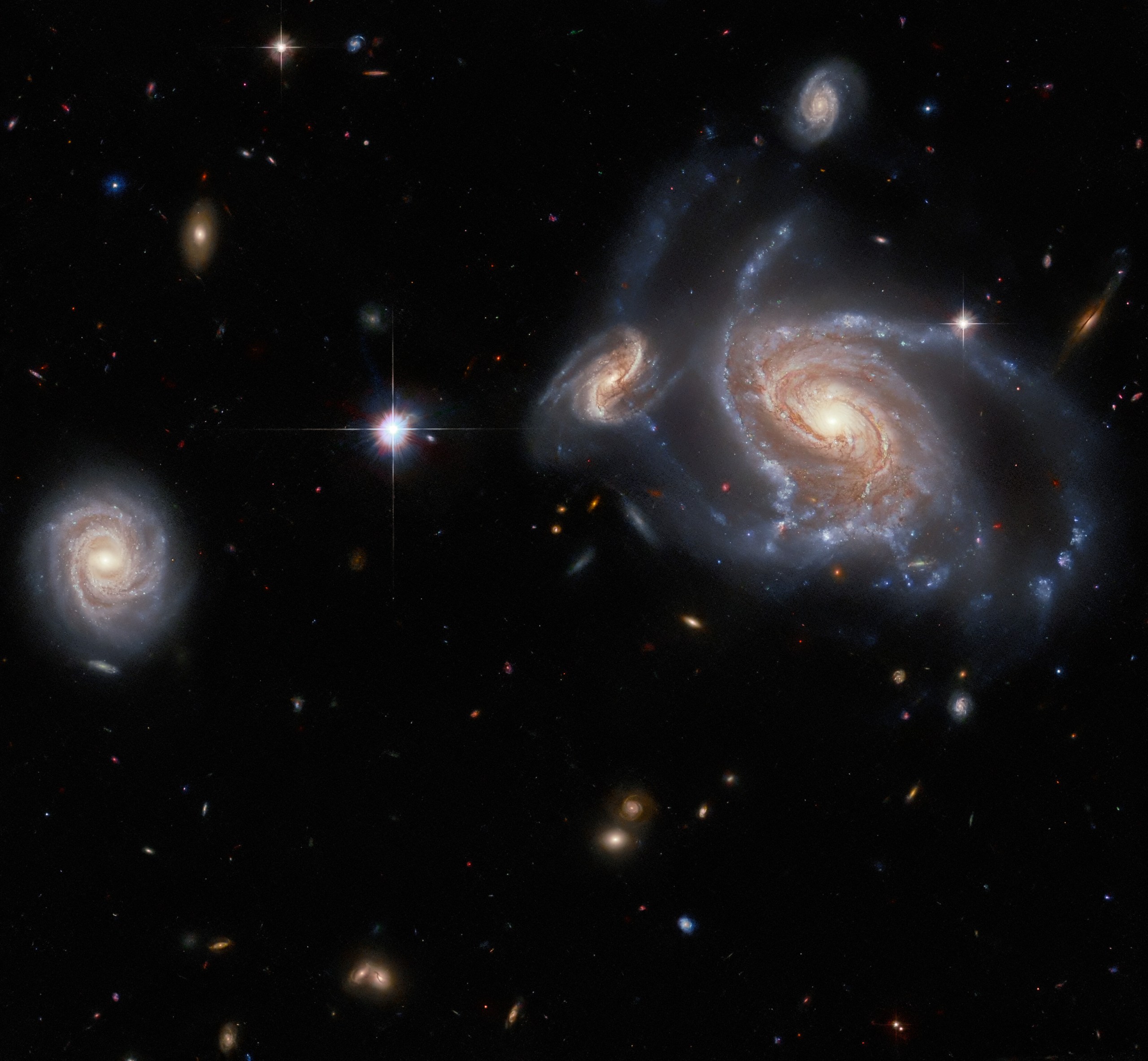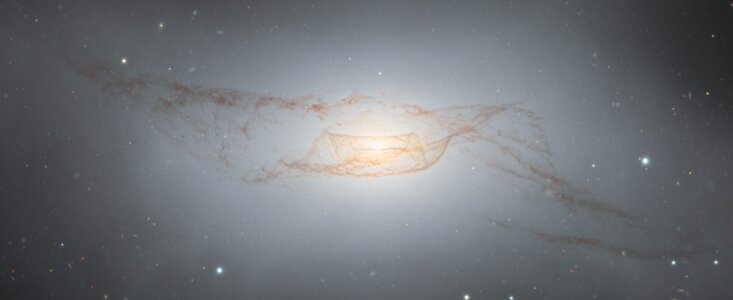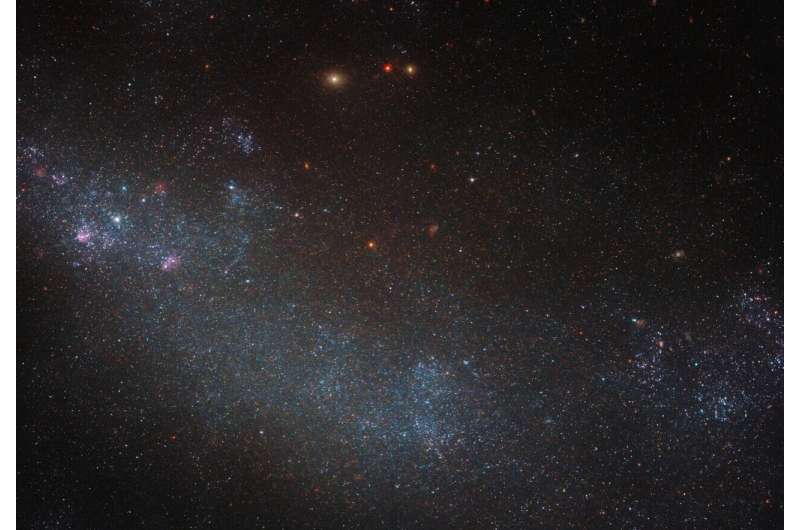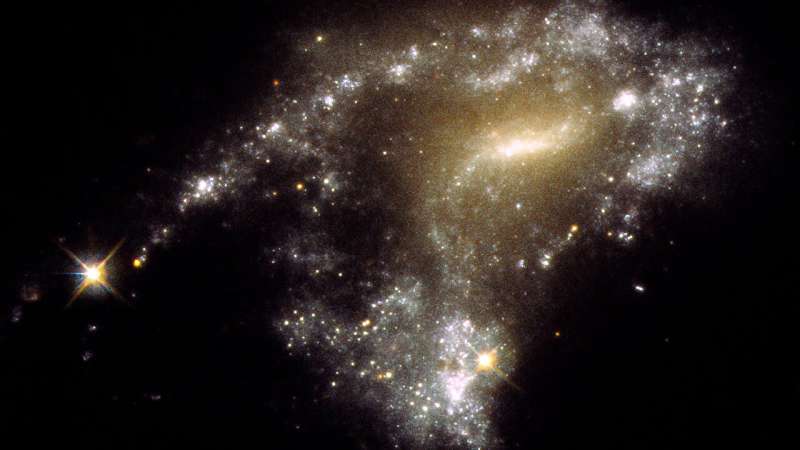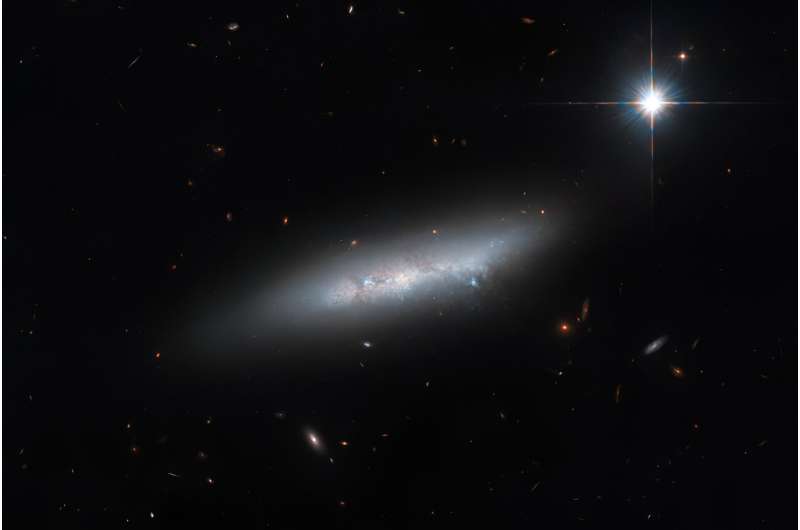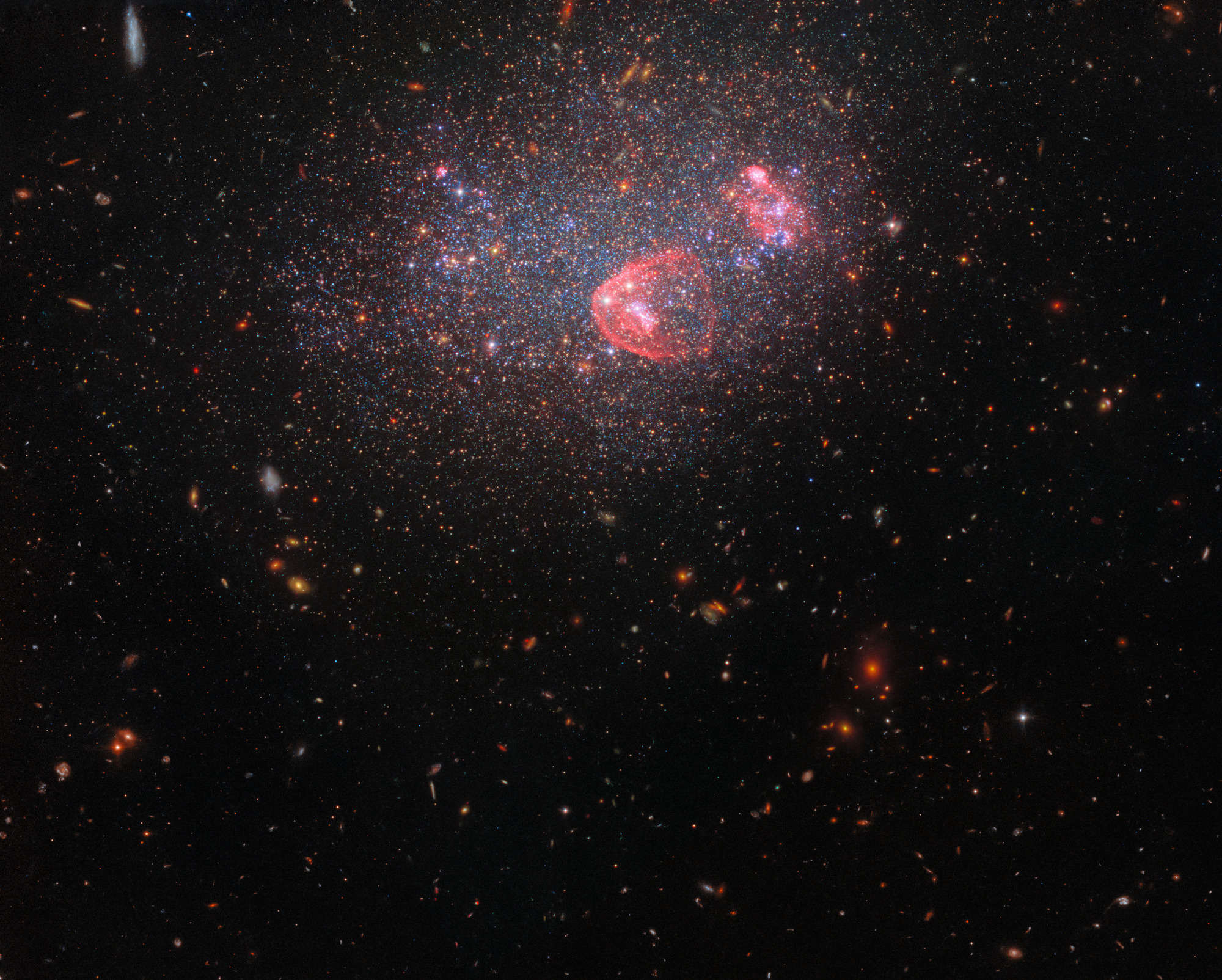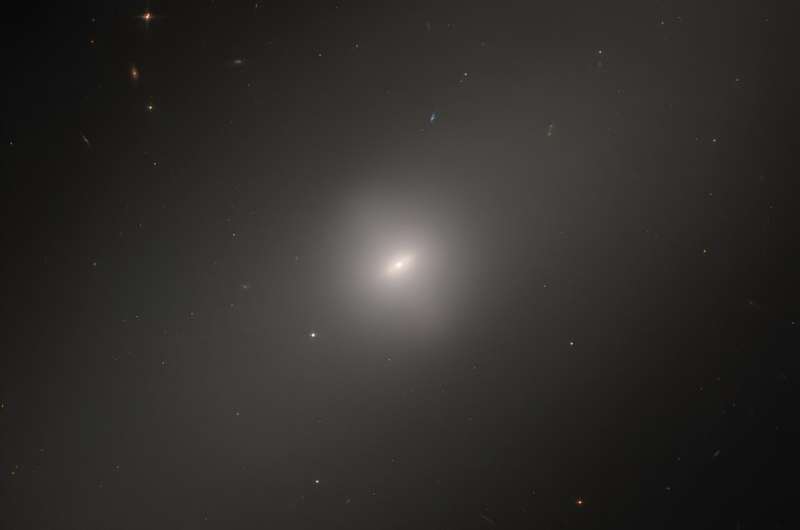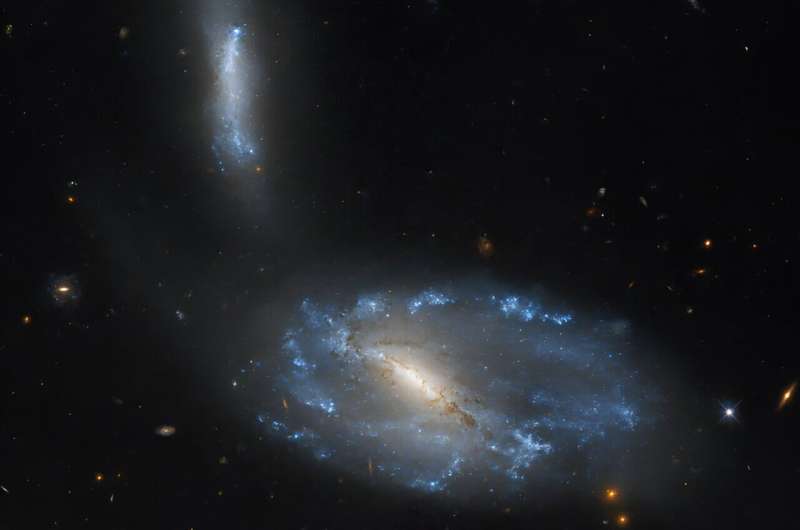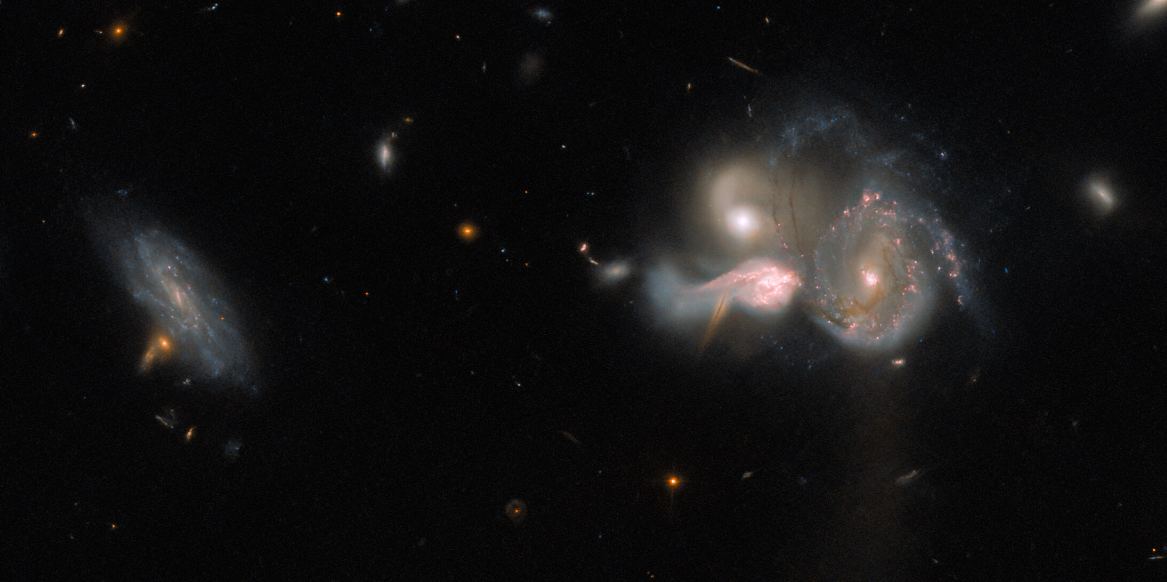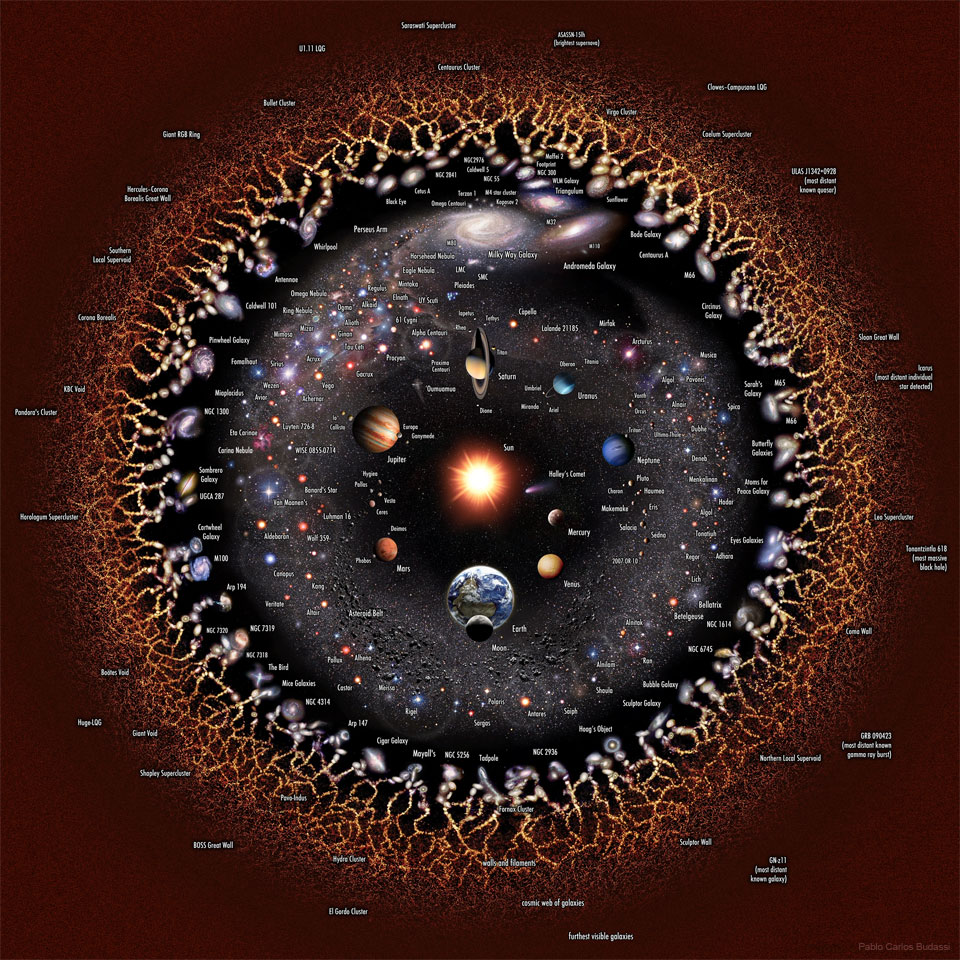AVAO wrote: ↑Mon Mar 18, 2024 7:47 pm
18.03.2024 HST: The Spider (and not its web)
NASA/ESA | Original release 2024 March 18
This gauzy-looking celestial body is UGC 5829, an irregular galaxy that lies about 30 million light-years away. Despite there not being many observations of this relatively faint galaxy, it has the distinction of having a descriptive soubriquet: the Spider Galaxy. Perhaps the distorted galactic arms with their glowing, star-forming tips bring to mind the clawed legs of an arachnid. Somewhat confusingly, there is another, very similarly nicknamed but otherwise entirely distinct, galaxy known as the Spiderweb Galaxy. This galaxy has also been more extensively imaged (notably by Hubble), despite the fact that it lies about 300 times further from Earth than the Spider Galaxy does.
[...]
read more
download
ZOOM
GOTD4Y Jac
I think it looks amazing!

The colors are stunning, and the galaxy is so delicate and transparent. A spider, my foot! Well, I love it when Hubble takes images of nearby galaxies, so that the pictures are so highly resolved.
ESA/Hubble wrote:
An irregular galaxy, consisting of a large central body of dull-coloured stars, with distorted arms around it.
Yes, dull-colored is the right way to describe them! But why are they so dull? Are these stars strange in some way?
No, they are ordinary yellow to yellow-orange stars, most of them tiny little red dwarfs, and some of them red giants like Pollux or Arcturus. So why do they collectively look "dull"? It's because there are so relatively few of them! UG 5829 is a low-mass galaxy, and we can tell because its yellow population is so faint! Most of the baryonic ("ordinary") mass of a galaxy is always tied up in its yellow population, and that's because the red and yellow stars produce little light for their mass.
What UGC 5829 lacks, as you can see, is a bright yellow center. On the other hand it's so full of pink and blue baubles and glitter that it resembles a (perhaps toppling) galactic Christmas tree!I
I love all the background galaxies, too. These background galaxies are typically much redder in overall color than UGC 5829, because they have been redshift-reddened by the expansion of the Universe. But sometimes I find the degree of reddening confusing.
Look at these two background galaxies:
The two background galaxies appear to be the same size, shape and orientation. My immediate impression is that both are approximately the same distance from us, yet one is yellow-white and the other is red.
I find it confusing!

Another source of confusion is the possible mix-up between the Spider Galaxy (UGC 5829) and the Spiderweb galaxy (LEDA 2826829, MRC 1138-262).
ESA/Hubble wrote:
Somewhat confusingly, there is another, very similarly nicknamed but otherwise entirely distinct, galaxy known as the Spiderweb Galaxy. This galaxy has also been more extensively imaged (notably by Hubble), despite the fact that it lies about 300 times further from Earth than the Spider Galaxy does.
Hmm, 300 times further from the Earth than the Spider Galaxy does (whose distance is 30 million light-years). So how far away is the Spiderweb Galaxy? 30 times 300, is that 90 billion? As in, 90 billion light-years? Whoa, hold your horses, Ann! The entire observable Universe is supposed to be 90 billion light-years in diameter, so you'd better make that
9 billion light-years!
And, in case you're interested in the Spiderweb Galaxy...
ESA/Hubble wrote:
This image is a composite of many separate exposures made by the ACS instrument on the Hubble Space Telescope using several different filters. It shows the Spiderweb Galaxy sitting at the centre of an emergent galaxy cluster, surrounded by hundreds of other galaxies from the cluster.
The image provides a dramatic glimpse of a large massive galaxy under assembly as smaller galaxies merge. This has commonly been thought to be the way galaxies grew in the young Universe, but now the Hubble observations of the radio galaxy MRC 1138-262, nicknamed the "Spiderweb Galaxy", have shown dozens of star-forming satellite galaxies in the actual process of merging.
Ann


